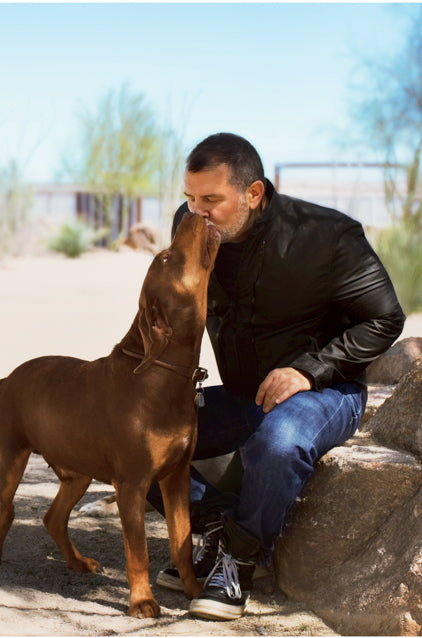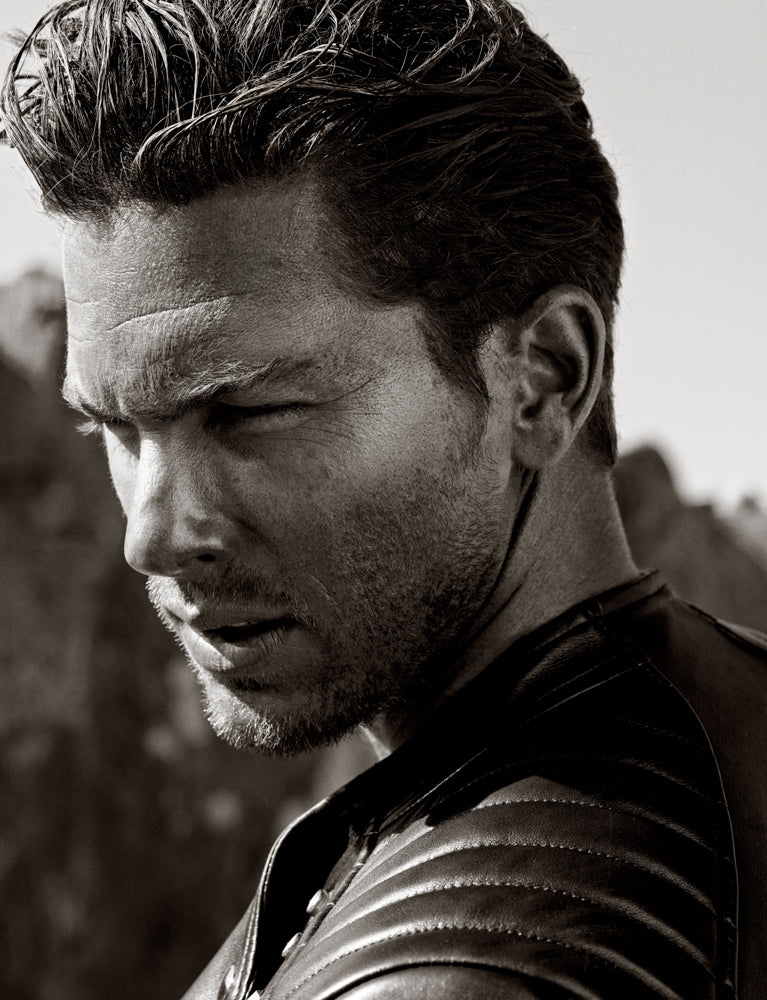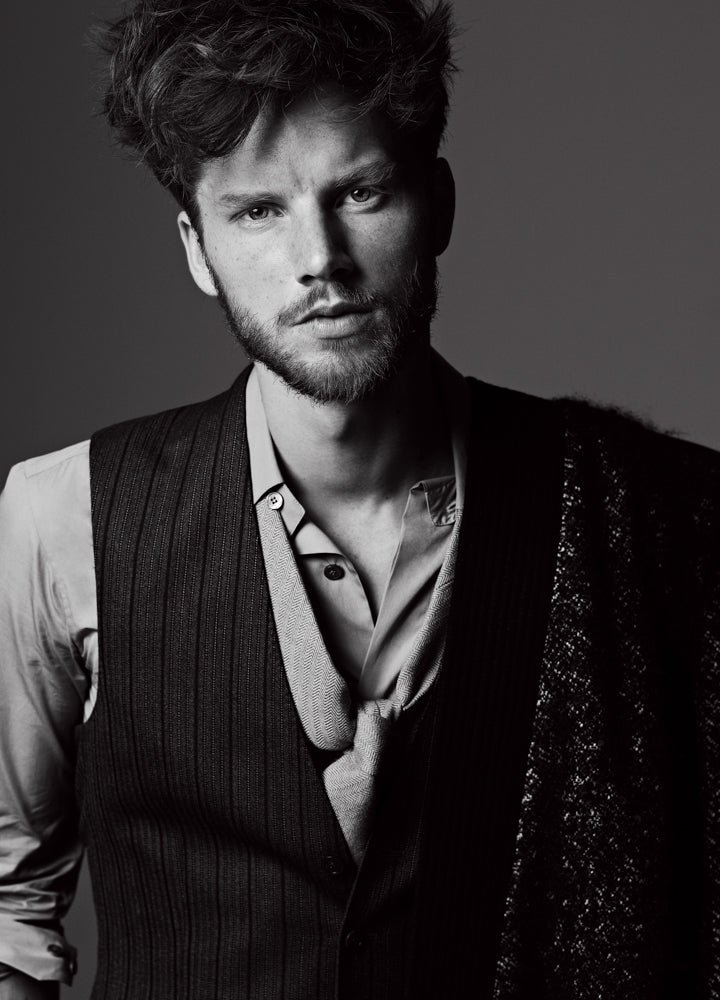
TIM PALEN
TIM PALEN



“You need to make them fall in love with, or be intrigued with, or be afraid of the hero. The Saw movies have a Faustian trade off in that the main sadistic character is making you feel more alive by making you value your life”
Tim Palen prefers to conduct an interview at home. It is Friday, the day one of his movies opens. “The critics are mad at the film,” he says, subtly implying that the movie will be a hard sell.
Tim’s place, built in 1919 by a US Army Colonel, is a Spanish colonial jewel with perfect proportions, clear circulation and sober hardwood furniture. As befits a Mexican hacienda, the house is cool, its interior shaded by a veranda crawling with bougainvillea, dogs barking in the distance. Tim feels comfortable in this familiar environment — The Cobra, I learn later, is shy. Known to make decisions quickly and not one to take hostages, Tim is warm, welcoming — and unusually humble about his achievements.
And yet, by all accounts, Tim is one of the catalysts of Lionsgate’s continuous growth at a critical time when film — once deemed “spectacle for the masses” — is becoming increasingly splintered into diverse audiences. During his eleven-year tenure, Lionsgate Entertainment has experienced both a redefining of its mission, and a recrudescence in its audience. Lionsgate’s films have earned more than 40 Academy Award nominations and 10 Oscar wins, and Palen’s campaigns have received dozens of Key Art awards and other honors.
Tim Palen does not feel comfortable claiming ownership of the title auteur, yet he is one of the most hands on execs in the business, conceptualizing campaigns, writing copy and taking the photos that are used in the print campaigns for the movies he markets. The decisive moment of whether a movie campaign works or not depends on the skill and intelligence with which all these elements are tied together. And where a director has ninety minutes to tell a story, Tim has two and a half minutes max, to flirt with to and seduce an audience.
JACQUELINE MIRÓ: WHAT ARE THE LAWS THAT GOVERN MOVIE MARKETING?
TIM PALEN: There really aren’t any formal laws. There are certainly many basic standards and practices that govern most traditional movie marketing campaigns – one sheet, trailer, billboards and the Sacred :30 TV spot.
JM: YOU ARE KNOWN TO TREAD A THIN LINE, TO PUSH THE ENVELOPE OF THE POSSIBLE IN TERMS OF CAMPAIGN MATERIALS. CAN YOU THINK BACK TO A MOMENT WHEN YOU THOUGHT THAT IT WOULDN’T WORK, THAT IT WAS TOO RISKY?
TP: We have to push the envelope. That’s our job. We will never outspend our competitors – so we have to always try harder and scream louder and sometimes play rougher. There’s never a guarantee when you strive to break out of the pack. When we were working on some of the early viral ideas for SAW, I remember Mark Burg (producer of the SAW series) saying “we can’t do that… can we?” To me those are words of encouragement because it usually means there’s a big idea somewhere that’s starting to be debated.
JM:IN THE CASE OF THE MOVIE W, YOU PLAYED WITH DIFFERENT CAMPAIGN IDEAS, SOME MILDLY DISTURBING, OTHERS IRREVERENT. WHAT IS YOUR IDEA OF A COMPROMISE?
TP: The general public assumed that Oliver Stone was going to present a very one-sided view of George W Bush. Liberals wanted that and Conservatives were afraid of that – and as a marketer there’s a good hook inherent in the idea of one of the best directors in the world taking a world leader to school in a biopic. But the movie Oliver made really presented a balanced and relatively unbiased look at George W Bush and his presidency. And I didn’t want to do anything that would overtly defy Oliver or compromise his vision.
There is a photo I took of Josh Brolin (who played W) that I ended up using in the print campaign where he has his head on the desk in the Oval Office. It’s a very open and bright image that is set against a familiar background of flags and dark wood. It was meant to frame the movie in a playful and slightly comedic light. As an alternate comp I took that same image but made Josh Brolin small in the frame against a solid black background. The effect was more somber and serious and almost dignified. The playful comp was used in the marketing campaign and after the movie was released Oliver asked for a copy of the more serious one for his office.
One was a good example of advertising that didn’t necessary reflect the essence of the movie the filmmaker made. And the other was probably a better piece of art. I have a lot of respect for Oliver Stone for recognizing the difference.
JM: LIONSGATE ALLOTS SMALLER BUDGETS TO MARKETING THAN MOST OTHER STUDIOS. IS THIS SOMETHING THAT YOU SEE CHANGING IN THE FUTURE, PARTICULARLY WITH LARGER MOVIES SUCH AS CATCHING FIRE?
TP: It’s in the DNA of the whole company to do more with less – and the continued success of any growing company hinges on not forgetting where you came from. We are creative and resourceful – and success hopefully means more opportunities with new partners in crime. But big success doesn’t mean bigger budgets. It’s not how we got here and frankly it’s not necessary.
JM: THE CONTENT OF THE HUNGER GAMES LEAD TO A LOT OF CONTROVERSY. BUT YOU HANDLED IT IN A VERY MEASURED WAY, AND LIONSGATE ENDED UP WITH ONE THE THE HIGHEST GROSSING MOVIES IN THE HISTORY OF HOLLYWOOD. HOW CHALLENGING WAS IT TO APPEAL TO A WIDE AUDIENCE?
TP: There were a lot of challenges in marketing a movie based on a book everyone loves, especially knowing that it was the first of 4 films in a series. The best decision we made was to take our cues from Suzanne Collins’ book. The Hunger Games is a story about a reluctant hero who is forced into a world of violence and how institutionalized violence (I.e. War) changes everyone. One of the biggest challenges fundamentally was how to handle the notion of kids killing kids. The books do not glorify violence and Katniss is not a killer.
Sensationalizing that aspect of the story would be contrary to the core message of the books and we believed that it would be alienating to a huge part of the audience who love the books and who would love the movie.
JM: HOW DO YOU FEEL ABOUT HORROR, AND PARTICULARLY WHAT IS DIFFERENT ABOUT MARKETING A HORROR MOVIE, WHERE YOU HAVE TO SELL JUST THE RIGHT AMOUNT OF FEAR IN THE INITIAL TRAILER? HOW IS THE NOTION OF THE HERO PROBLEMATIZED?
TP: I’m a huge fan of horror movies and the horror genre has been one of the staples of Lionsgate for many years. You have 2.5 minutes in a trailer to get the audience vested in your story and in your hero (or anti-hero).
You need to make them intrigued with or fall in love with or be terrified of him or her enough to want to spend two hours with them. People go to comedies because they like to laugh. So when you’re selling a comedy your campaign better be funny. Thank god people like to be scared – selling horror means the campaign better be scary or at the very least promise that you will be scared when you see the movie. Translating that promise into a ticket purchase is the tricky part.
JM: I ALWAYS ASSUMED TIM PALEN, THE ARTIST, PRECEDED TIM PALEN THE CMO. CAN YOU TELL ME MORE ABOUT YOUR BACKGROUND?
TP: I started out on the production side of graphic design – first as a typesetter and later a stat camera operator. As a hobby I used to collect 3D stereo slides – and when I learned that you can still buy the cameras (Kodak Stereo Realist cameras – a 35MM film camera with 2 lenses that captures 2 images of a single shot that becomes 3D when viewed through a lighted viewer – think ViewMaster) I started taking my own stereo photos. I took some photography classes and bought a medium format film camera so shooting for work just became a logical extension of my job – and a much needed creative outlet.
Having a job that is equal measure right brain/left brain is a dream. I love that my current position doesn’t require me to chose one over the other.
JM: WHAT WAS THE FIRST CAMPAIGN YOU SHOT? HAS YOUR APPROACH CHANGED SINCE THEN?
TP: The first campaign I did was for the Los Angeles Film Festival. Dawn Hudson was running the festival and stopped by my office at Lionsgate to ask my advice on the campaign for the festival that year. I had an image on my wall that I shot and she asked if I could put her in touch with the artist to use it for the campaign that year.
Most recently I shot the campaign for HUNGER GAMES: CATCHING FIRE. Because I also shot the campaign for the first HUNGER GAMES I have gotten to know the talent and there’s a certain level of trust and familiarity that has added a level of magic to the campaigns. As a general rule a photographer has a short window of time to connect with an actor and make them feel comfortable and safe and taken care of – most times it’s a matter of hours from the time they show up at the studio for hair/makeup before you have to dive right in. I think that’s one of the advantages of my job – I get to connect with the people I’m working with on a more intimate level than most marketing executives.
JM: YOU JUST RELEASED THE FIRST TEASER FOR CATCHING FIRE (WHICH GOT OVER 28M VIEWS IN A LITTLE OVER A WEEK) BUT I’M SURE THERE ARE STILL MANY CHALLENGES. WHAT ARE THE SPECIFIC QUALIFIERS TO TAKE INTO ACCOUNT WITH YOUR NEXT MARKETING CAMPAIGN?
TP: The launch of the teaser trailer for CATCHING FIRE was a hugely pivotal moment in the ongoing HUNGER GAMES campaign. Because we have a franchise across four films each piece is just part of the larger puzzle, and this step was even more crucial because we had such great success on the first film. At the same time we have a new Director (Francis Lawrence), a new editor, a new cinematographer and a new costume designer.
So I really needed this first glimpse of the second film to work hard to reassure the fan base that the characters they know and love are back and that the integrity we showed with the first movie is still intact. But almost equally important for me was to show that the stakes are higher, the drama will be greater and that CATCHING FIRE will be taking the story of our reluctant hero Katniss Everdeen to a whole other level. I’m grateful that Francis Lawrence has delivered a gigantic movie that has so many rich and amazing pieces for me to play with. He’s really made my job a fun and easy one.
Probably the most satisfying thing I saw after the release of the teaser was a fan comment on one of the blogs that posted the trailer. I tend to be overly obsessive about reading and monitoring real fan reaction to the materials. This one comment did the most to reassure me that we had hit the mark with the new teaser trailer: “Shit’s getting real”. It doesn’t get better than that.


